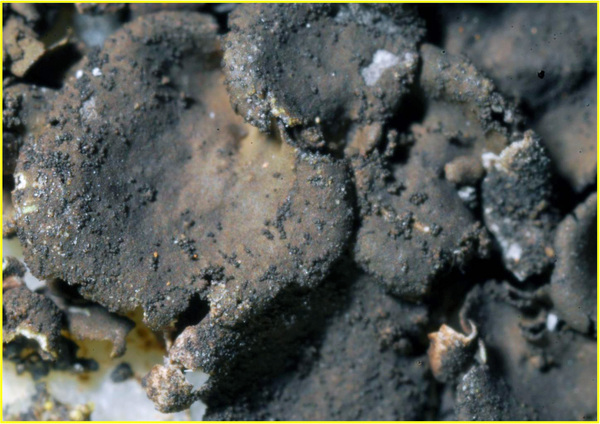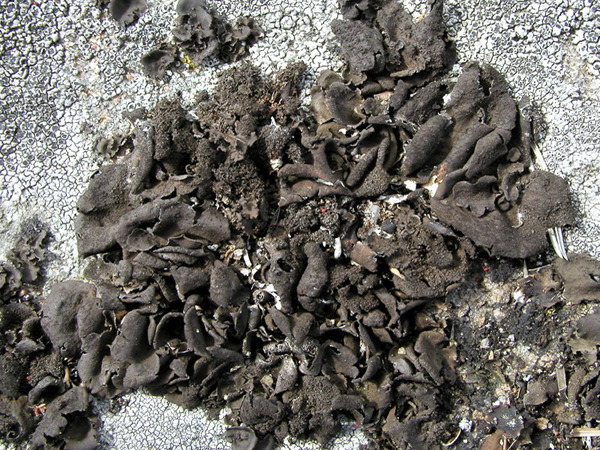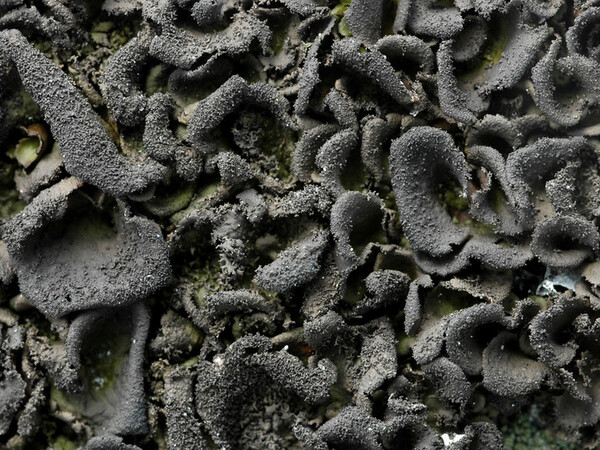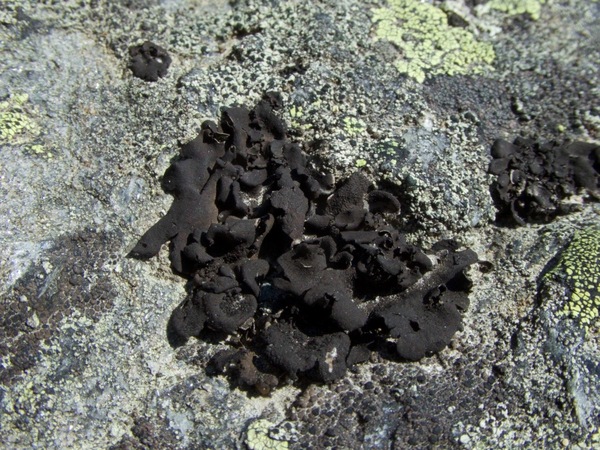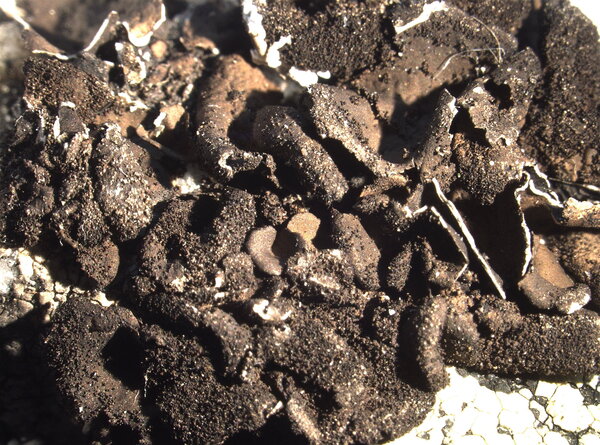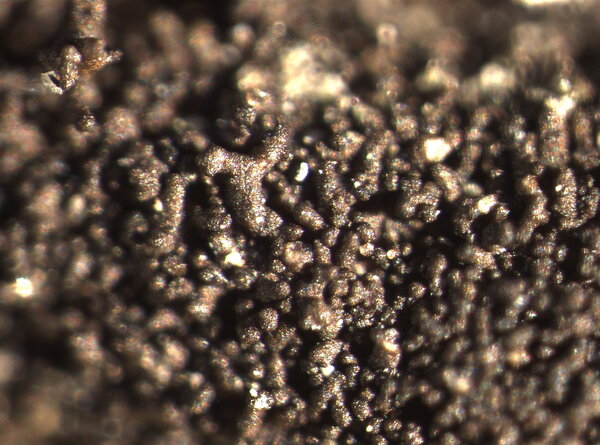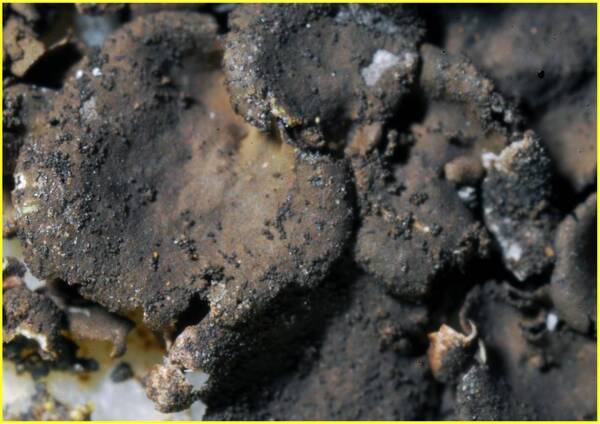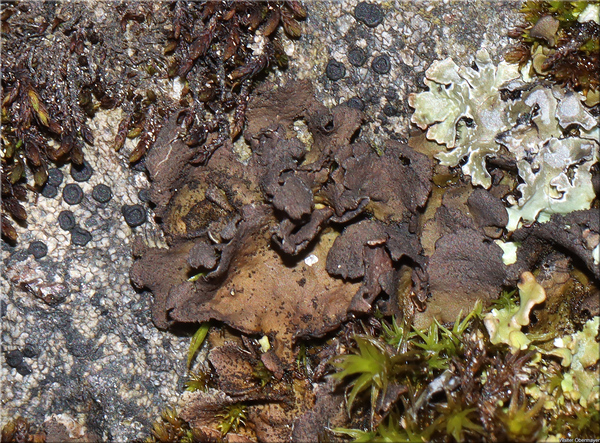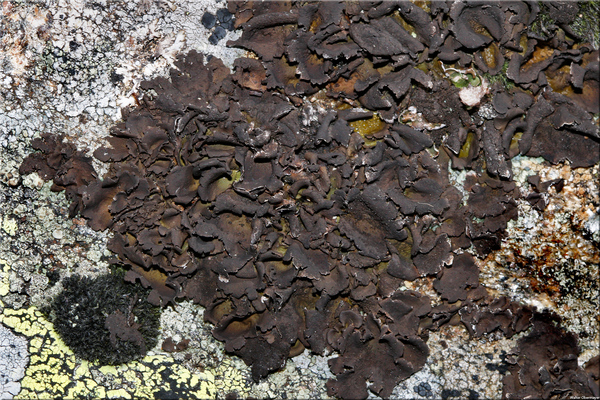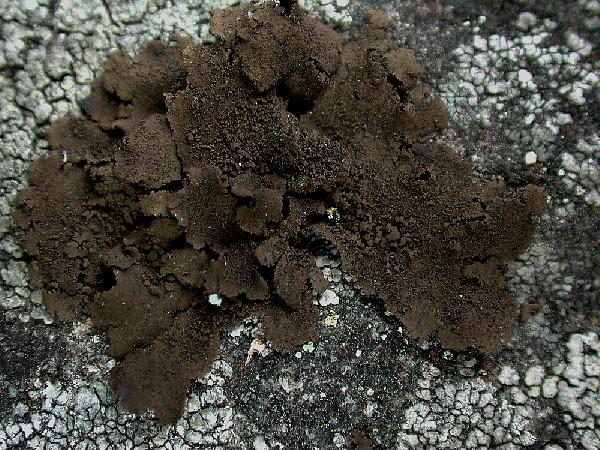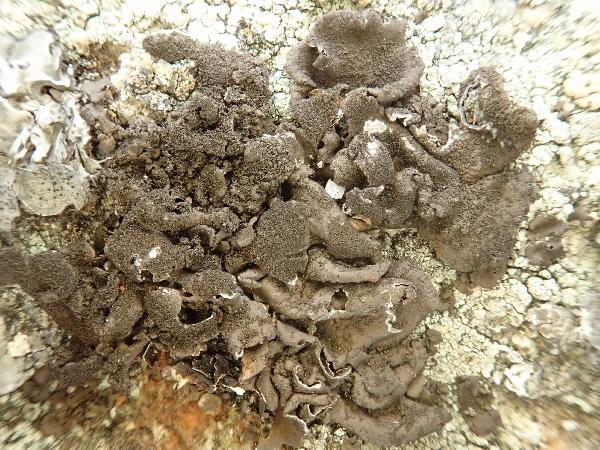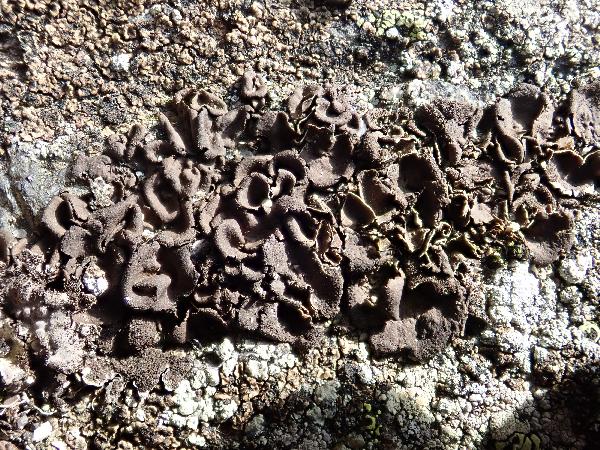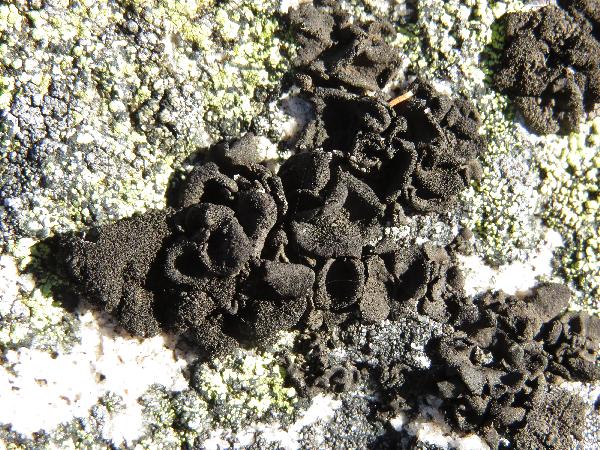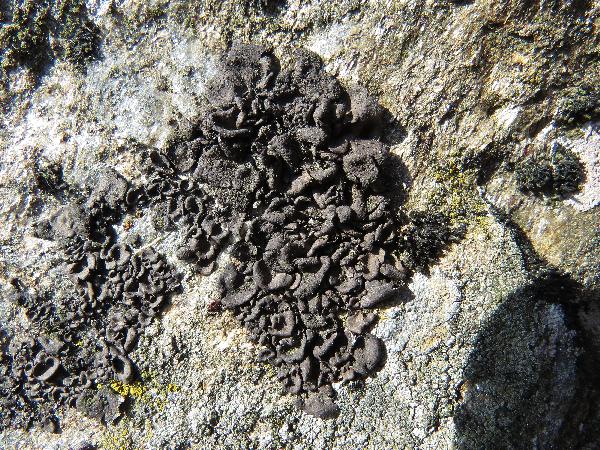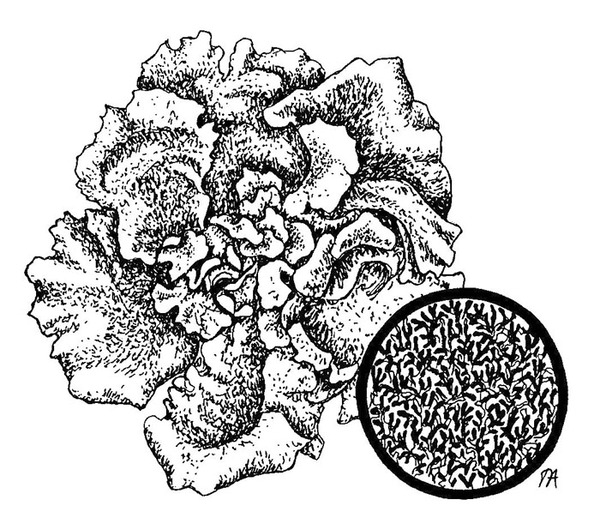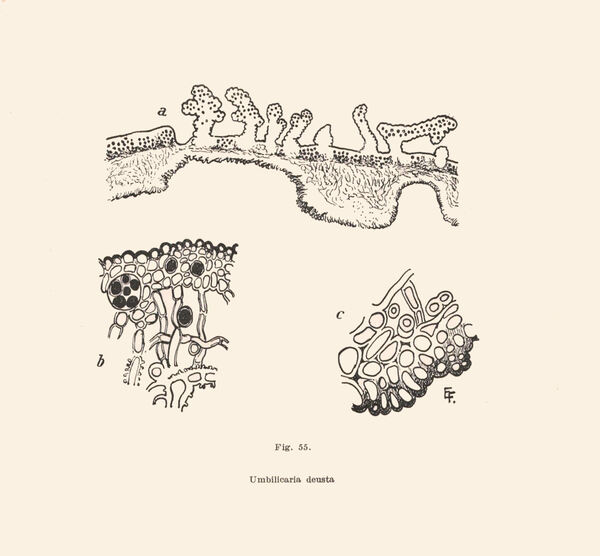Umbilicaria deusta (L.) Baumg.
Fl. Lips.: 571, 1790. Basionym: Lichen deustus L. - Sp. Pl., 2: 1150, 1753.
Synonyms: Gyrophora aenea var. flocculosa (Wulfen) Schaer.; Gyrophora deusta (L.) Ach.; Gyrophora flocculosa (Wulfen) Turner & Borrer; Gyrophora polyphylla var. deusta (L.) Rabenh.; Umbilicaria flocculosa (Wulfen) Hoffm.
Distribution: N - Frl (Tretiach & Hafellner 2000), Ven (Caniglia & al. 1999), TAA (Caniglia & al. 2002, Nascimbene 2003, 2006c, 2008b, Lang 2009, Nascimbene & al. 2022), Lomb (Zocchi & al. 1997, Dalle Vedove & al. 2004, Gheza 2019, 2019b), Piem (Morisi & Sereno 1995, Isocrono & Falletti 1999, Isocrono & al. 2003, 2004, 2006, Isocrono & Piervittori 2008, Giordani & al. 2014, Favero-Longo & al. 2015, Lich. Ital. Exs. 11: Puntillo & al. 2017), VA (Piervittori & Isocrono 1997, 1999, Piervittori & al. 2001, Isocrono & al. 2008, Matteucci & al. 2015c), Emil (Dalle Vedove & al. 2002, Fariselli & al. 2020), Lig (Brunialti & al. 1999). C - Tosc (Benesperi 2007, Tretiach & al. 2008), Sar (Nöske 2000, Rizzi & al. 2011). S - Bas (Potenza 2006, Potenza & Fascetti 2012), Cal (Puntillo 1996, Potenza & al. 2011), Si.
Description: Thallus foliose-umbilicate, heteromerous, dorsiventral, monophyllous in very young specimens, otherwise polyphyllous, 0.1-0.2(-0.3) mm thick, fragile when dry, somewhat gelatinous when wet, 2-4(-8) cm wide, attached by a central holdfast, often forming large swards, the edges ondulate, often down-turned when dry. Young specimens (those up to 0.7 cm wide) monophyllous, orbicular in outline, shell- or ear-shaped; old specimens polyphyllous, irregular in outline, the lobes elongated, with often perforated margins. Upper surface dark brown to brownish black, dull or partly shiny, smooth, even or slightly wrinkled, usually with abundant, at first granulose, then cylindrical, simple or branched, sometimes flattened isidia arranged in punctiform clusters or irregularly spreading along cracks and abrasions. Lower surface brown, sometimes black in central parts, smooth to minutely areolate, pitted, erhizinate, without thalloconidia. Upper cortex c. 10 µm thick; medulla white, loose; lower cortex scleroplectenchymatous, c. 20 µm thick. Apothecia very rare, black gyrodisc, to 1.5 mm across. Epithecium brown, hymenium colourless, 75-95 µm high, paraphyses septate, 2-2.5 µm thick; hypothecium pale brown. Asci 8-spored, clavate, thick-walled, with an amyloid apical dome, Umbilicaria-type. Ascospores 1-celled hyaline, ellipsoid, (15-)18-27 x 7-12 µm. Photobiont chlorococcoid. Spot tests: medulla K-, C+ red, KC+ red, P-. Chemistry: medulla with gyrophoric acid and small amounts of lecanoric and hiascic acids. Note: an arctic-alpine to boreal-montane, circumpolar lichen found on rocks wetted by rain near the ground, in sites with a long snow-lie; one of the most common species of Umbilicaria in the Alps, reaching south to the mountains of Sicily.
Growth form: Foliose, umbilicate
Substrata: rocks
Photobiont: green algae other than Trentepohlia
Reproductive strategy: mainly asexual, by isidia, or isidia-like structures (e.g. schizidia)
Commonnes-rarity: (info)
Alpine belt: common
Subalpine belt: extremely common
Oromediterranean belt: rare
Montane belt: rare
Submediterranean belt: absent
Padanian area: absent
Humid submediterranean belt: absent
Humid mediterranean belt: absent
Dry mediterranean belt: absent
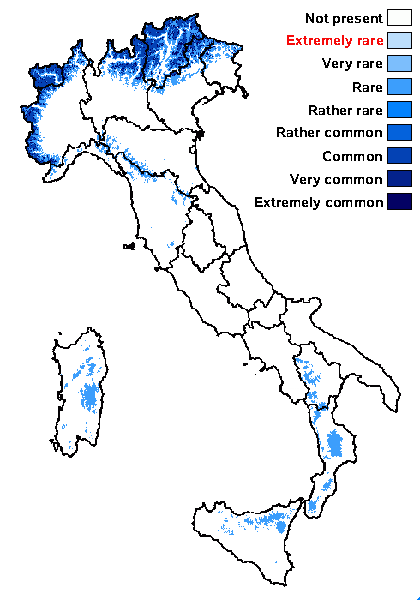
Predictive model
Herbarium samples


P.L. Nimis; Owner: Department of Life Sciences, University of Trieste
Herbarium: TSB (35205)
2002/07/09
isidia


P.L. Nimis; Owner: Department of Life Sciences, University of Trieste
Herbarium: TSB (5678)
2001/12/05
detail of thallus center
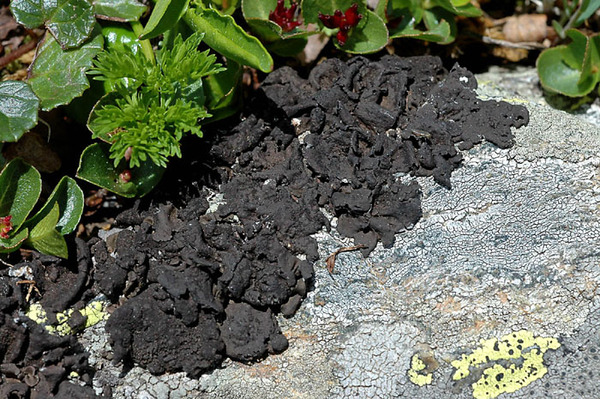
Giancarlo Medici; Owner: Giancarlo Medici
Italy, Trentino-Alto Adige, Bolzano, Sesto, M. Elmo; altitude: 1600-1880 m
2010
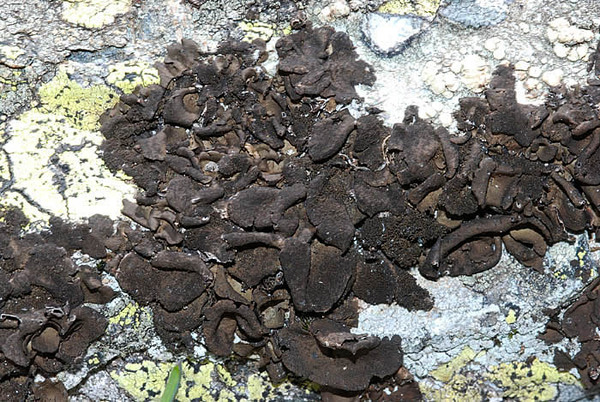
Giancarlo Medici; Owner: Giancarlo Medici
Italy, Trentino-Alto Adige, Bolzano, Sesto, M. Elmo; altitude: 1600-1880 m
2010
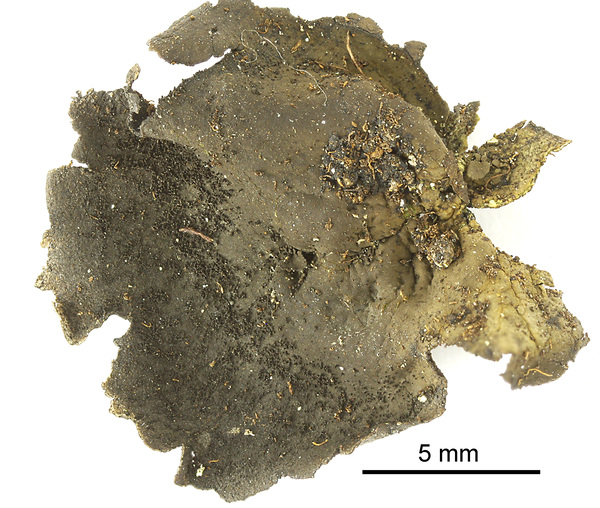

Felix Schumm – CC BY-SA 4.0
[16531], Österreich, nordöstlich von Ischgl beim Silvretta Stausee, ca. 2000 m. Leg. A. Matuschewski 07.2010, det. Schumm 07.2010.
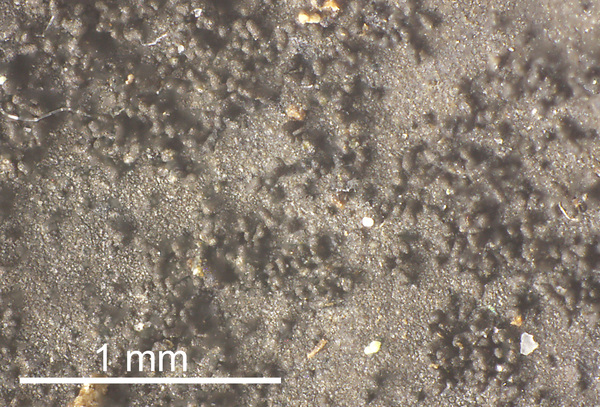

Felix Schumm – CC BY-SA 4.0
[16531], Österreich, nordöstlich von Ischgl beim Silvretta Stausee, ca. 2000 m. Leg. A. Matuschewski 07.2010, det. Schumm 07.2010.
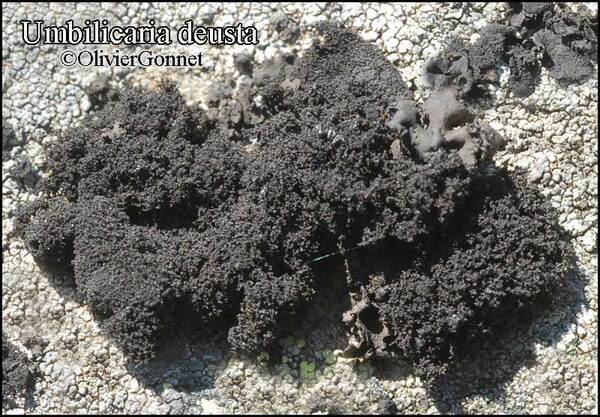
Courtesy Danièle et Olivier Gonnet - Source: https://www.afl-lichenologie.fr/Photos_AFL/Photos_AFL_U/Umbilicaria_deusta.htm
France, session AFL 2007 - Ardèche

Courtesy Danièle et Olivier Gonnet - Source: https://www.afl-lichenologie.fr/Photos_AFL/Photos_AFL_U/Umbilicaria_deusta.htm
France, session AFL 2007 - Ardèche
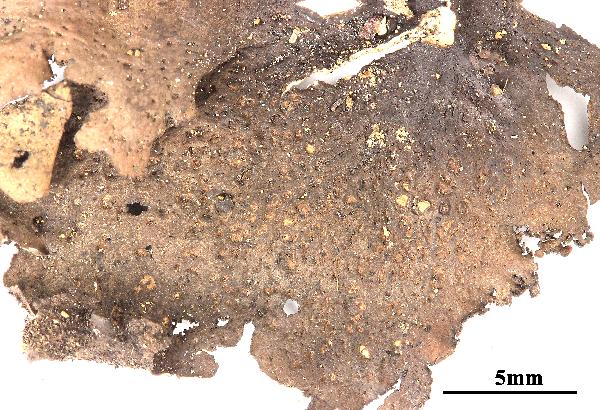

Felix Schumm - CC BY 4.0
[1535], Österreich, Großglockner Hochalpenstraße, auf Silikatgestein,
ca. 1800 m. Leg. F. Schumm, 05.08.1969, det. F. Schumm, 1969.
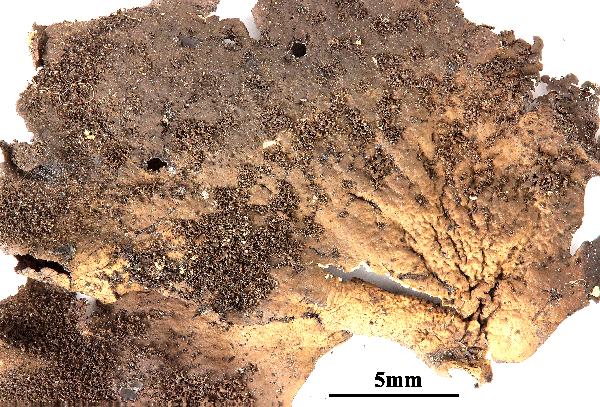

Felix Schumm - CC BY 4.0
[1535], Österreich, Großglockner Hochalpenstraße, auf Silikatgestein,
ca. 1800 m. Leg. F. Schumm, 05.08.1969, det. F. Schumm, 1969.
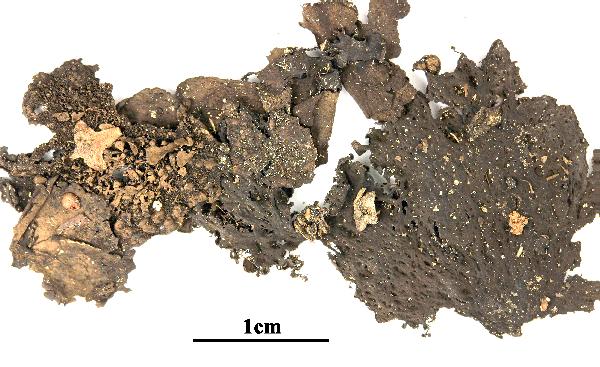

Felix Schumm - CC BY 4.0
[2054], Finnland, Tavastia australis: Loppi, Salo, Sorsama S-; on stone
on the shore of Sorsamo-Lake. Leg. Pentti Alanko, 12.09.1970 (Nr.
16,270), det. P. Alanko. Ex Plantae Fennicae.
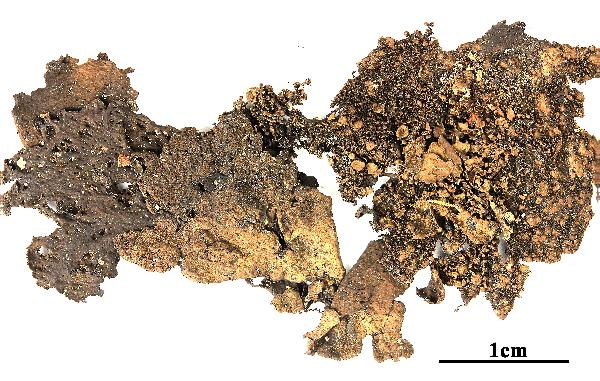

Felix Schumm - CC BY 4.0
[2054], Finnland, Tavastia australis: Loppi, Salo, Sorsama S-; on stone
on the shore of Sorsamo-Lake. Leg. Pentti Alanko, 12.09.1970 (Nr.
16,270), det. P. Alanko. Ex Plantae Fennicae.
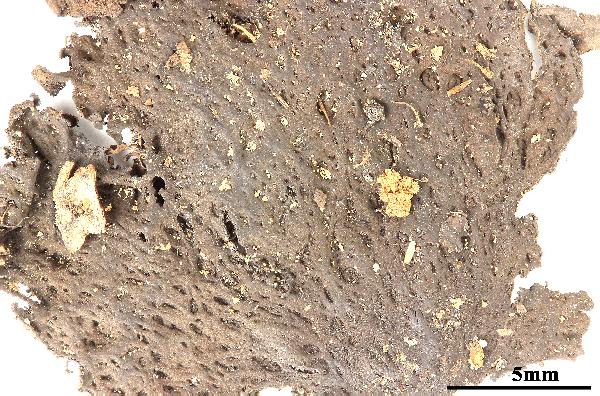

Felix Schumm - CC BY 4.0
[2054], Finnland, Tavastia australis: Loppi, Salo, Sorsama S-; on stone
on the shore of Sorsamo-Lake. Leg. Pentti Alanko, 12.09.1970 (Nr.
16,270), det. P. Alanko. Ex Plantae Fennicae.


Felix Schumm - CC BY 4.0
[2054], Finnland, Tavastia australis: Loppi, Salo, Sorsama S-; on stone
on the shore of Sorsamo-Lake. Leg. Pentti Alanko, 12.09.1970 (Nr.
16,270), det. P. Alanko. Ex Plantae Fennicae.
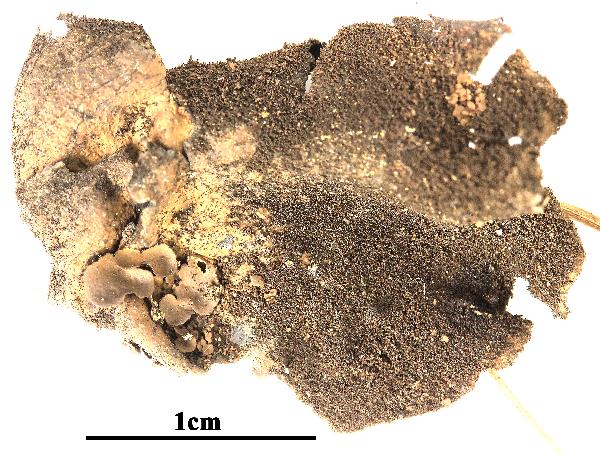

Felix Schumm - CC BY 4.0
[4903], Schweiz, Wallis, Champex westl. Orsières, Val de Arpette,
Granituntergrund, ca. 1700 m, Leg. F. Schum (SVBL-Exkursion),
22.08.1996, det. F. Schumm, 1998.
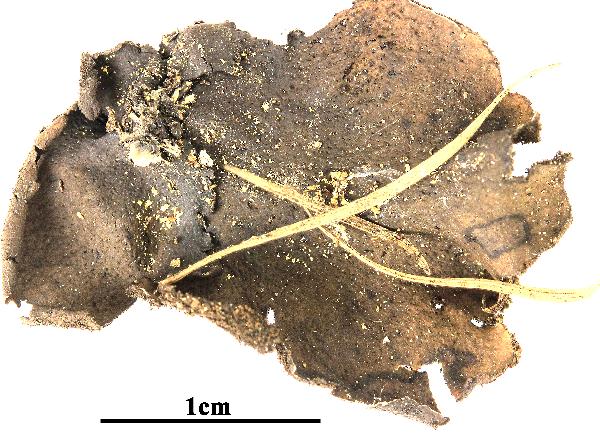

Felix Schumm - CC BY 4.0
[4903], Schweiz, Wallis, Champex westl. Orsières, Val de Arpette,
Granituntergrund, ca. 1700 m, Leg. F. Schum (SVBL-Exkursion),
22.08.1996, det. F. Schumm, 1998.
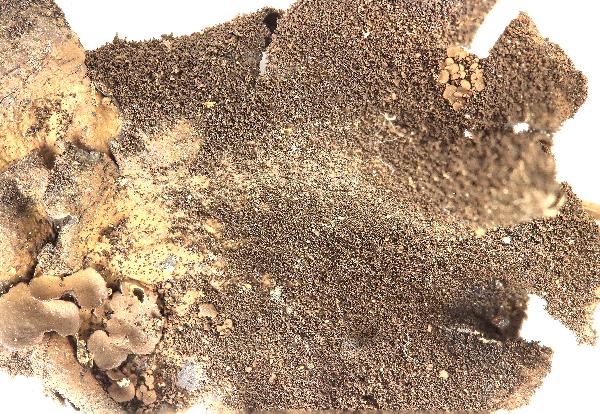

Felix Schumm - CC BY 4.0
[4903], Schweiz, Wallis, Champex westl. Orsières, Val de Arpette,
Granituntergrund, ca. 1700 m, Leg. F. Schum (SVBL-Exkursion),
22.08.1996, det. F. Schumm, 1998.
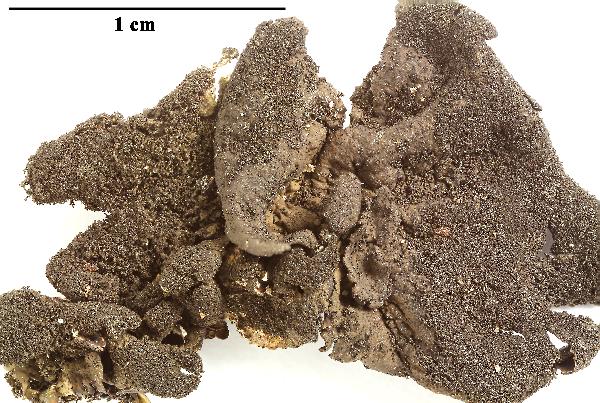

Felix Schumm - CC BY 4.0
[20661], Österreich, Lungau, Karneralm, 47°29’89’’ N, 13°47’22.02’’
E, 1900 m, auf Silikatblock. Leg. F. Schumm & U. Schwarz, 2.9.2019.


Felix Schumm - CC BY 4.0
[20661], Österreich, Lungau, Karneralm, 47°29’89’’ N, 13°47’22.02’’
E, 1900 m, auf Silikatblock. Leg. F. Schumm & U. Schwarz, 2.9.2019.
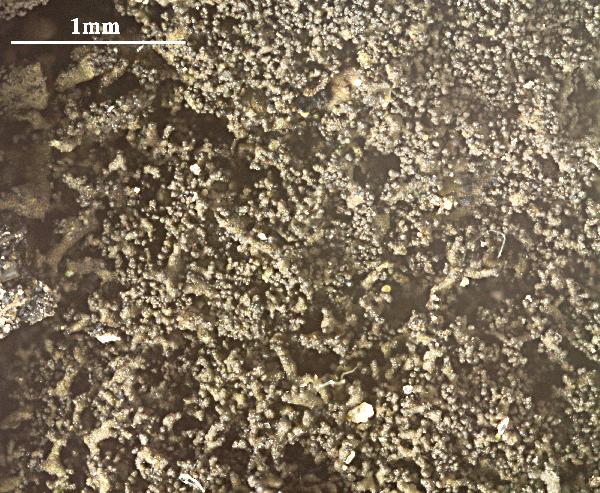

Felix Schumm - CC BY 4.0
[20661], Österreich, Lungau, Karneralm, 47°29’89’’ N, 13°47’22.02’’
E, 1900 m, auf Silikatblock. Leg. F. Schumm & U. Schwarz, 2.9.2019.
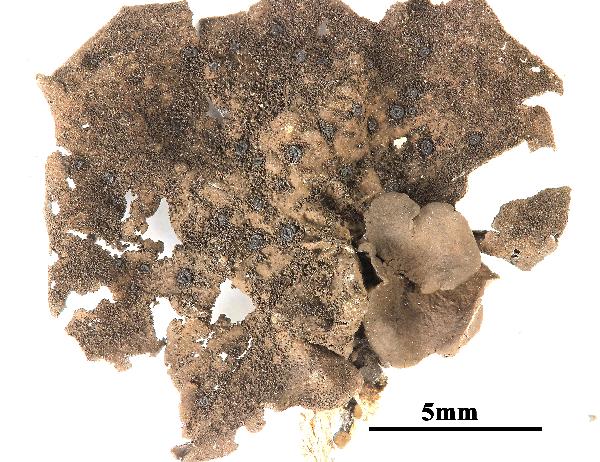

Felix Schumm - CC BY 4.0
[20663], Österreich, Lungau, S-Seite des Großecks oberhalb Mauterndorf
in Richtung Speiereckhütte, 47,12846° N, 13,64913° E bis
47,13086° N, 13,64336° E, 1968 m-2074 m, an Silikatfelsen. Leg. F.
Schumm & U. Schwarz, 31.8.2019, det. F. Schumm - Th. oberseits mit
feinen Isidien.
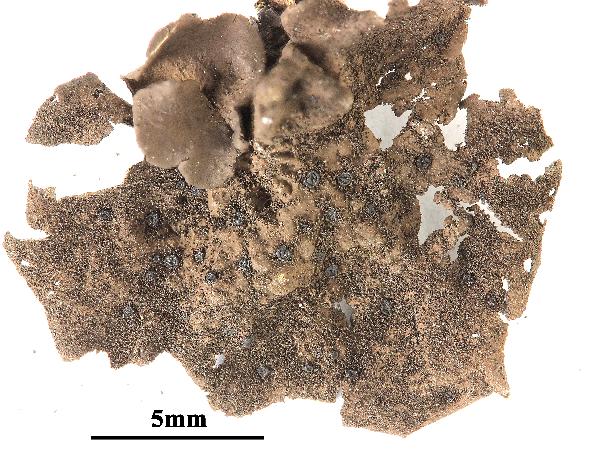

Felix Schumm - CC BY 4.0
[20663], Österreich, Lungau, S-Seite des Großecks oberhalb Mauterndorf
in Richtung Speiereckhütte, 47,12846° N, 13,64913° E bis
47,13086° N, 13,64336° E, 1968 m-2074 m, an Silikatfelsen. Leg. F.
Schumm & U. Schwarz, 31.8.2019, det. F. Schumm - Th. oberseits mit
feinen Isidien.
Growth form: Foliose, umbilicate
Substrata: rocks
Photobiont: green algae other than Trentepohlia
Reproductive strategy: mainly asexual, by isidia, or isidia-like structures (e.g. schizidia)
Commonnes-rarity: (info)
Alpine belt: common
Subalpine belt: extremely common
Oromediterranean belt: rare
Montane belt: rare
Submediterranean belt: absent
Padanian area: absent
Humid submediterranean belt: absent
Humid mediterranean belt: absent
Dry mediterranean belt: absent

Predictive model
| Herbarium samples |


P.L. Nimis; Owner: Department of Life Sciences, University of Trieste
Herbarium: TSB (35205)
2002/07/09
isidia


P.L. Nimis; Owner: Department of Life Sciences, University of Trieste
Herbarium: TSB (5678)
2001/12/05
detail of thallus center

Giancarlo Medici; Owner: Giancarlo Medici
Italy, Trentino-Alto Adige, Bolzano, Sesto, M. Elmo; altitude: 1600-1880 m
2010

Giancarlo Medici; Owner: Giancarlo Medici
Italy, Trentino-Alto Adige, Bolzano, Sesto, M. Elmo; altitude: 1600-1880 m
2010


Felix Schumm – CC BY-SA 4.0
[16531], Österreich, nordöstlich von Ischgl beim Silvretta Stausee, ca. 2000 m. Leg. A. Matuschewski 07.2010, det. Schumm 07.2010.


Felix Schumm – CC BY-SA 4.0
[16531], Österreich, nordöstlich von Ischgl beim Silvretta Stausee, ca. 2000 m. Leg. A. Matuschewski 07.2010, det. Schumm 07.2010.

Courtesy Danièle et Olivier Gonnet - Source: https://www.afl-lichenologie.fr/Photos_AFL/Photos_AFL_U/Umbilicaria_deusta.htm
France, session AFL 2007 - Ardèche

Courtesy Danièle et Olivier Gonnet - Source: https://www.afl-lichenologie.fr/Photos_AFL/Photos_AFL_U/Umbilicaria_deusta.htm
France, session AFL 2007 - Ardèche


Felix Schumm - CC BY 4.0
[1535], Österreich, Großglockner Hochalpenstraße, auf Silikatgestein, ca. 1800 m. Leg. F. Schumm, 05.08.1969, det. F. Schumm, 1969.


Felix Schumm - CC BY 4.0
[1535], Österreich, Großglockner Hochalpenstraße, auf Silikatgestein, ca. 1800 m. Leg. F. Schumm, 05.08.1969, det. F. Schumm, 1969.


Felix Schumm - CC BY 4.0
[2054], Finnland, Tavastia australis: Loppi, Salo, Sorsama S-; on stone on the shore of Sorsamo-Lake. Leg. Pentti Alanko, 12.09.1970 (Nr. 16,270), det. P. Alanko. Ex Plantae Fennicae.


Felix Schumm - CC BY 4.0
[2054], Finnland, Tavastia australis: Loppi, Salo, Sorsama S-; on stone on the shore of Sorsamo-Lake. Leg. Pentti Alanko, 12.09.1970 (Nr. 16,270), det. P. Alanko. Ex Plantae Fennicae.


Felix Schumm - CC BY 4.0
[2054], Finnland, Tavastia australis: Loppi, Salo, Sorsama S-; on stone on the shore of Sorsamo-Lake. Leg. Pentti Alanko, 12.09.1970 (Nr. 16,270), det. P. Alanko. Ex Plantae Fennicae.


Felix Schumm - CC BY 4.0
[2054], Finnland, Tavastia australis: Loppi, Salo, Sorsama S-; on stone on the shore of Sorsamo-Lake. Leg. Pentti Alanko, 12.09.1970 (Nr. 16,270), det. P. Alanko. Ex Plantae Fennicae.


Felix Schumm - CC BY 4.0
[4903], Schweiz, Wallis, Champex westl. Orsières, Val de Arpette, Granituntergrund, ca. 1700 m, Leg. F. Schum (SVBL-Exkursion), 22.08.1996, det. F. Schumm, 1998.


Felix Schumm - CC BY 4.0
[4903], Schweiz, Wallis, Champex westl. Orsières, Val de Arpette, Granituntergrund, ca. 1700 m, Leg. F. Schum (SVBL-Exkursion), 22.08.1996, det. F. Schumm, 1998.


Felix Schumm - CC BY 4.0
[4903], Schweiz, Wallis, Champex westl. Orsières, Val de Arpette, Granituntergrund, ca. 1700 m, Leg. F. Schum (SVBL-Exkursion), 22.08.1996, det. F. Schumm, 1998.


Felix Schumm - CC BY 4.0
[20661], Österreich, Lungau, Karneralm, 47°29’89’’ N, 13°47’22.02’’ E, 1900 m, auf Silikatblock. Leg. F. Schumm & U. Schwarz, 2.9.2019.


Felix Schumm - CC BY 4.0
[20661], Österreich, Lungau, Karneralm, 47°29’89’’ N, 13°47’22.02’’ E, 1900 m, auf Silikatblock. Leg. F. Schumm & U. Schwarz, 2.9.2019.


Felix Schumm - CC BY 4.0
[20661], Österreich, Lungau, Karneralm, 47°29’89’’ N, 13°47’22.02’’ E, 1900 m, auf Silikatblock. Leg. F. Schumm & U. Schwarz, 2.9.2019.


Felix Schumm - CC BY 4.0
[20663], Österreich, Lungau, S-Seite des Großecks oberhalb Mauterndorf in Richtung Speiereckhütte, 47,12846° N, 13,64913° E bis 47,13086° N, 13,64336° E, 1968 m-2074 m, an Silikatfelsen. Leg. F. Schumm & U. Schwarz, 31.8.2019, det. F. Schumm - Th. oberseits mit feinen Isidien.


 INDEX FUNGORUM
INDEX FUNGORUM
 GBIF
GBIF
 DOLICHENS
DOLICHENS
